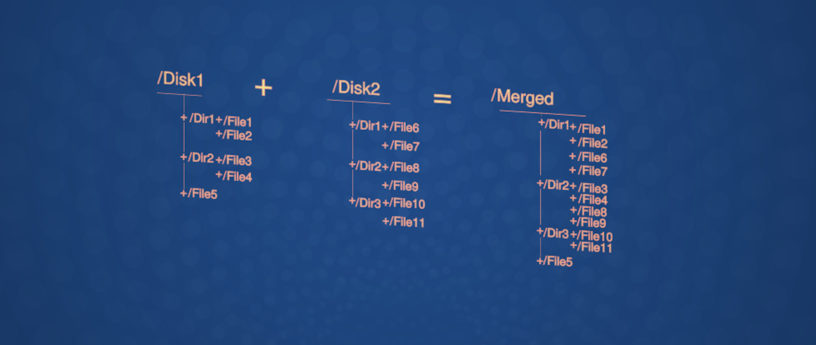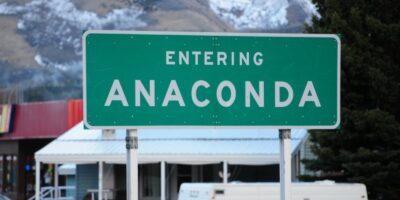What happens if you have multiple disks or partitions that you’d like to use for a media project and you don’t want to lose any of your existing data, but you’d like to have everything located or mounted under one drive. That’s where mergerfs can come to your rescue!
mergerfs is a union filesystem geared towards simplifying storage and management of files across numerous commodity storage devices.
You will need to grab the latest RPM from their github page here. The releases for Fedora have fc and the version number in the name. For example here is the version for Fedora 31:
mergerfs-2.29.0-1.fc31.x86_64.rpm
Installing and configuring mergerfs
Install the mergerfs package that you’ve downloaded using sudo:
$ sudo dnf install mergerfs-2.29.0-1.fc31.x86_64.rpm
You will now be able to mount multiple disks as one drive. This comes in handy if you have a media server and you’d like all of your media files to show up under one location. If you upload new files to your system, you can copy them to your mergerfs directory and mergerfs will automatically copy them to which ever drive has enough free space available.
Here is an example to make it easier to understand:
$ df -hT | grep disk /dev/sdb1 ext4 23M 386K 21M 2% /disk1 /dev/sdc1 ext4 44M 1.1M 40M 3% /disk2 $ ls -l /disk1/Videos/ total 1 -rw-r--r--. 1 curt curt 0 Mar 8 17:17 Our Wedding.mkv $ ls -l /disk2/Videos/ total 2 -rw-r--r--. 1 curt curt 0 Mar 8 17:17 Baby's first Xmas.mkv -rw-rw-r--. 1 curt curt 0 Mar 8 17:21 Halloween hijinks.mkv
In this example there are two disks mounted as disk1 and disk2. Both drives have a Videos directory with existing files.
Now we’re going to mount those drives using mergerfs to make them appear as one larger drive.
$ sudo mergerfs -o defaults,allow_other,use_ino,category.create=mfs,moveonenospc=true,minfreespace=1M /disk1:/disk2 /media
The mergerfs man page is quite extensive and complex so we’ll break down the options that were specified.
- defaults: This will use the default settings unless specified.
- allow_other: allows users besides sudo or root to see the filesystem.
- use_ino: Causes mergerfs to supply file/directory inodes rather than libfuse. While not a default it is recommended it be enabled so that linked files share the same inode value.
- category.create=mfs: Spreads files out across your drives based on available space.
- moveonenospc=true: If enabled, if writing fails, a scan will be done looking for the drive with the most free space.
- minfreespace=1M: The minimum space value used.
- disk1: First hard drive.
- disk2: Second hard drive.
- /media: The directory folder where the drives are mounted.
Here is what it looks like:
$ df -hT | grep disk /dev/sdb1 ext4 23M 386K 21M 2% /disk1 /dev/sdc1 ext4 44M 1.1M 40M 3% /disk2 $ df -hT | grep media 1:2 fuse.mergerfs 66M 1.4M 60M 3% /media
You can see that the mergerfs mount now shows a total capacity of 66M which is the combined total of the two hard drives.
Using mergerfs
Continuing with the example:
There is a 30Mb video called Baby’s second Xmas.mkv. Let’s copy it to the /media folder which is the mergerfs mount.
$ ls -lh "Baby's second Xmas.mkv" -rw-rw-r--. 1 curt curt 30M Apr 20 08:45 Baby's second Xmas.mkv $ cp "Baby's second Xmas.mkv" /media/Videos/
Here is the end result:
$ df -hT | grep disk /dev/sdb1 ext4 23M 386K 21M 2% /disk1 /dev/sdc1 ext4 44M 31M 9.8M 76% /disk2 $ df -hT | grep media 1:2 fuse.mergerfs 66M 31M 30M 51% /media
You can see from the disk space utilization that mergerfs automatically copied the file to disk2 because disk1 did not have enough free space.
Here is a breakdown of all of the files:
$ ls -l /disk1/Videos/ total 1 -rw-r--r--. 1 curt curt 0 Mar 8 17:17 Our Wedding.mkv $ ls -l /disk2/Videos/ total 30003 -rw-r--r--. 1 curt curt 0 Mar 8 17:17 Baby's first Xmas.mkv -rw-rw-r--. 1 curt curt 30720000 Apr 20 08:47 Baby's second Xmas.mkv -rw-rw-r--. 1 curt curt 0 Mar 8 17:21 Halloween hijinks.mkv $ ls -l /media/Videos/ total 30004 -rw-r--r--. 1 curt curt 0 Mar 8 17:17 Baby's first Xmas.mkv -rw-rw-r--. 1 curt curt 30720000 Apr 20 08:47 Baby's second Xmas.mkv -rw-rw-r--. 1 curt curt 0 Mar 8 17:21 Halloween hijinks.mkv -rw-r--r--. 1 curt curt 0 Mar 8 17:17 Our Wedding.mkv
When you copy files to your mergerfs mount, it will always copy the files to the hard disk that has enough free space. If none of the drives in the pool have enough free space, then you won’t be able to copy them.






Mike
Nice article as I wasn’t aware of mergerfs, but someone is going to be really mad when they find out that their Wedding video and Baby’s First Christmas are empty files 😉
trapexit
Why would their files be empty?
No matter what storage system you have you need backup.
Ph0zzy
Does it have something to do with silverblue? I mean it would be nice to be able to install overlay packages without reboot.
ondrej
This is not possible, as the system is readonly, it cant be changed on the fly. You can always use toolbox (containers) or virtualization.
Vernon Van Steenkist
Great Article. A couple of questions:
How is this different from regular unionfs?
Do you take any file system performance hit?
Where does the mea data get stored?
Thanks
trapexit
The mergerfs docs are very thorough. I recommend checking them out.
As in unionfs-fuse? 1) It’s still maintained. 2) It offers a lot more functionality.
Yes. Naturally. There is an additional layer so it will take a hit. The amount depends greatly on the usage patterns and system.
What metadata?
Mx
Use lvm
rfrr
exactly
Cara
lvm and mergerfs serve different needs and lvm has the drawback of data spanning volumes, a failure that spans multiple volumes wouldmean data loss if any of the volumes it spans goes down, whereas with mergerfs you only lose whats on one volume and theres no data spanning multiple volumes. you cal also add in-use data disks to a mergerfs pool. …additionally you can use LVM with mergerfs since they work on fundamentally different levels
https://www.teknophiles.com/2018/02/19/disk-pooling-in-linux-with-mergerfs/
luna wigs
Everything is very open with a really clear description of the challenges.
It waas truly informative. Your site is useful.
Many thanks for sharing!